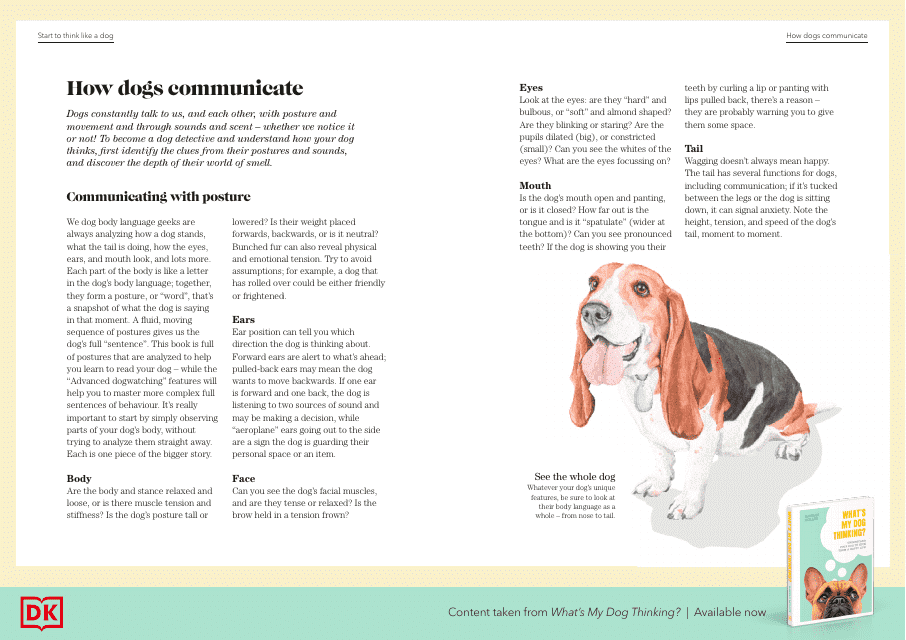Free Dog Body Language Chart Templates
Dog Body Language Chart: What Is It?
A Dog Body Language Chart is a key to our four-legged friends' mysteries. It is a pictorial manual for comprehending the deceptive hints and indications that dogs employ to express their feelings and intentions.
For dog owners, instructors, and fans looking to develop a stronger bond with their four-legged pals, this diagram is an invaluable resource. It enables people to decipher the clues given by their physical stances, expressions on their faces, and tail motions, assisting in the complex language of canine activity.
Stressed dog body language is an important topic covered by a dog body language chart. It draws attention to the symptoms related to stress that dogs may display, such as worry, fear, or distress. Similarly to humans, the chart clarifies the symptoms of possible violence in dogs by evaluating aggressive dog body language. We can act appropriately to defuse a situation and guarantee everyone's safety by identifying and honoring certain warning signs.
The chart also enlightens us on the range of feelings that dogs go through. It draws attention to indications of joy, peace, playfulness, and happiness. Our ability to assess our dogs' general wellbeing and give them the affection, care, and stimulation they require depends on our ability to recognize these signs.
For a full list of Dog Body Language Chart templates please feel free to check out our library below.
How to Read Dog Body Language?
Reading dog body language is similar to understanding a fascinating book written in a unique language. It calls for acute investigation, compassion, and knowledge of the signs and indications dogs use to convey their thoughts and feelings. Most importantly:
-
Take note of the dog's general body posture. While a nervous or anxious dog may display a stiff body with a curled tail or stooped posture, a cheerful and satisfied dog will display a loose physique and a wagging tail;
-
Following that, pay attention to the dog's emotions. A cheerful dog will possess untense muscles in its face, soft eyes, and a wide mouth with an untense tongue. A dog that is afraid or worried, on the contrary, might have large eyes, a furrowed forehead, and tightly compressed lips;
-
Although tail wagging is frequently interpreted as an indication of contentment, it's crucial to take the surrounding situation and physique into account. A dog that is sociable or happy will typically have a calm, flowing wag. But a folded tail or a rigid, high wag can indicate nervousness or even hostility;
-
Additionally important to dog communication are the ears. Flattened or backward ears can imply anxiety, fear, or hostility, whereas ears that face forward usually suggest attention or interest;
-
On top of these bodily clues, it's important to take background and surroundings into account. Dependent on the circumstance, dogs may exhibit various body language signals which could happen when presented with new people or places;
-
Keep in mind that all dogs are different. To effectively read body language, you must first develop a trusting and mutually understanding relationship with them. Spend time studying and understanding the unique indications and signs.
Still looking for a particular template? Take a look at the related templates below:
Documents:
3
This document discusses the body language of dogs, providing information on how to interpret their behavior and understand their emotions. It is a helpful resource for understanding our furry friends.
Understanding Canine Body Language: A Guide to Interpret Your Dog's Behavior
This document explains the various types of body language displayed by dogs and how to interpret their behavior. It provides valuable insights into their emotions, intentions, and communication methods.
This type of document provides information about dogs' body language. It helps understand how dogs communicate through their actions and expressions.



